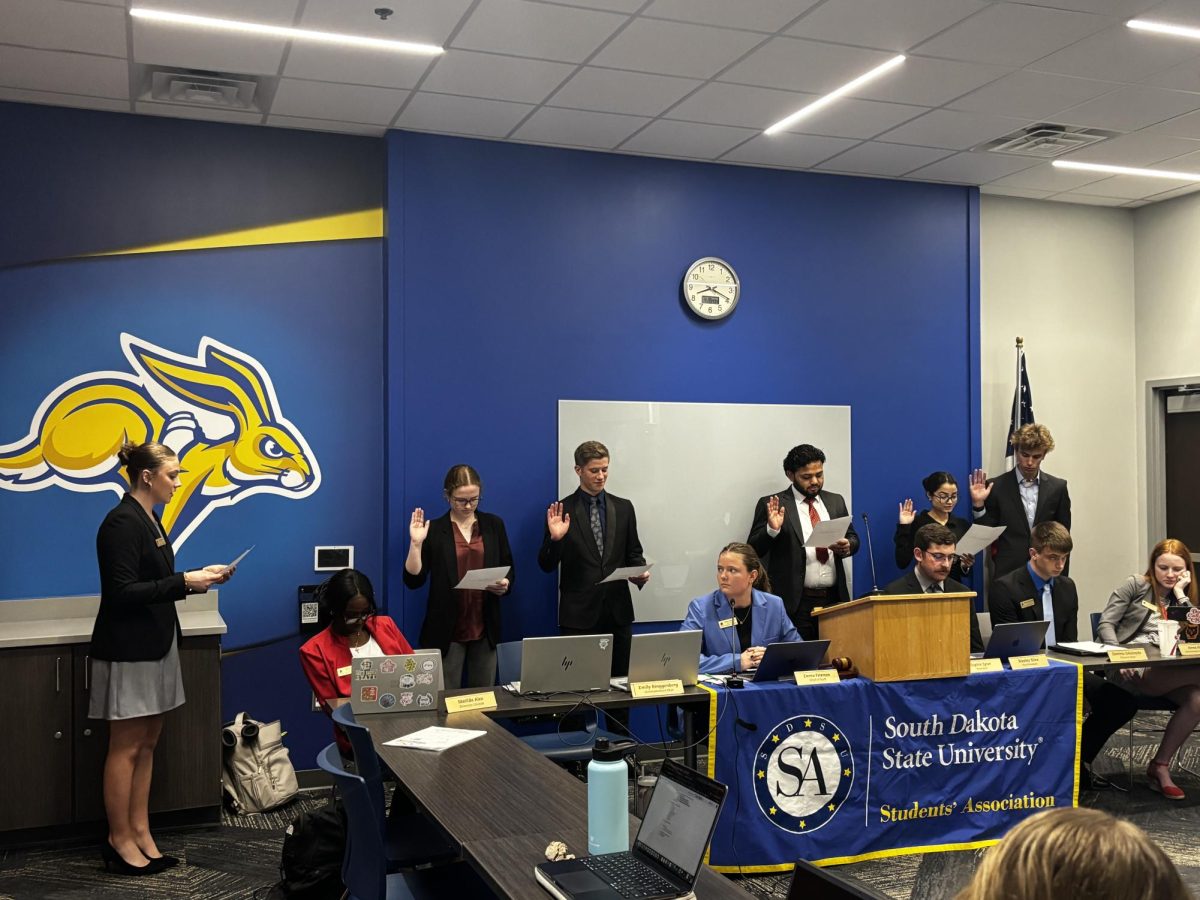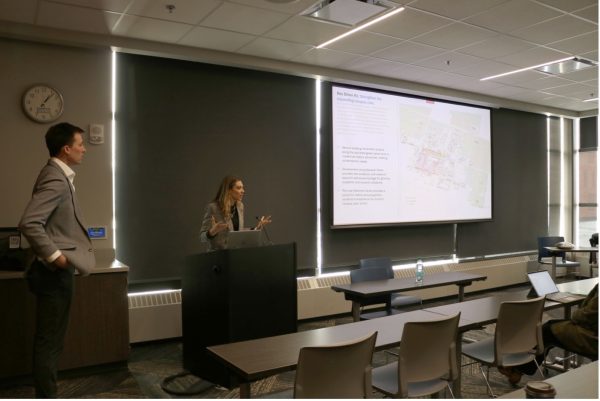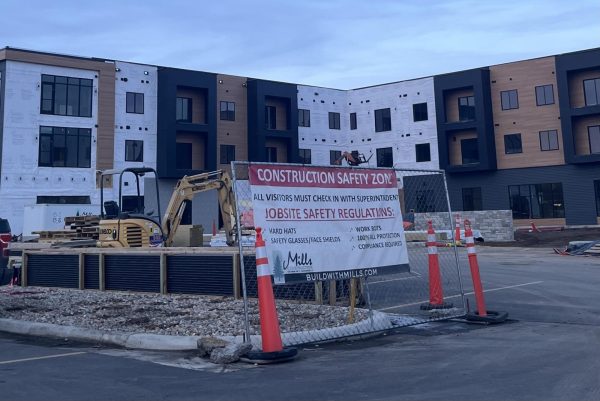The joke’s on SDSU
January 20, 2009
Tony Gorder
Would you clean up a radioactive spill with paper towels? Neither would Jay Leno.
SDSU received national exposure on the Jan. 5 episode of The Tonight Show with Jay Leno.
The “Life Safety at SDSU” brochure was featured on the segment “Headlines,” which features humorous mistakes or absurdities from various publications.
The featured part of the brochure reads, “If a large spill, contain the spill by using absorbent paper towels.” Leno introduced the excerpt by talking about people in protective suits cleaning up radioactive spills.
“I thought it was neat to see SDSU get on national television,” said Walker Darkow, a sophomore pharmacy major from Owatonna, Minn. “Seeing Jay hold a brochure with the Campanile on it was great.”
Gary L. Yarrow, environmental health and safety director, said that the brochure was not wrong but rather not understood correctly.
“It essentially is a misinterpretation of what the brochure is for,” said Yarrow. “It is designed for lab occupants. They work with very small amounts of radioactive materials. A large spill is in the order of 20 to 50 milliliters. There are about 236 milliliters in a cup, thus less than a one-forth of a cup, and not the hundreds of gallons that Leno referred to.”
Yarrow said the brochure lists the proper way to clean up a radioactive spill.
“In most cases, one absorbs the materials onto absorbent paper towels or other special materials and cleans the area with a strong detergent solution,” said Yarrow. “All materials are sealed in plastic bags and are given to the radiation safety office, which are then properly disposed by approved vendors. Protective equipment, such as a lab coat, gloves and chemical goggles, is required to work with the materials, as well as if one has to clean up a spill.”
The problem is that the brochure did not specify what was meant by a “large” spill.
“It is a mistake in that it should have been written with specific quantities instead of a broad statement,” said Yarrow. “A revised statement has been drafted to be part of the new brochure that will go out when we issue new Life Safety brochures.”
Radioactive materials can be found in campus labs. They are mostly used for research.
“The amount of exposure to radioactivity in these labs is much less than what you would be exposed in medical X-rays,” said Yarrow. “The amounts on campus are being reduced all the time by new techniques, but radioactive materials are used as a part of many research projects.”





















